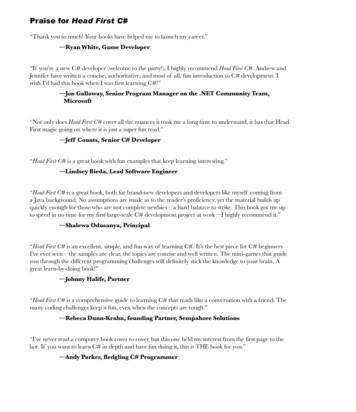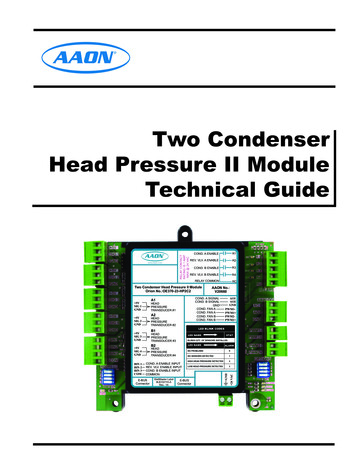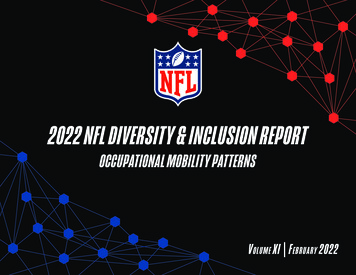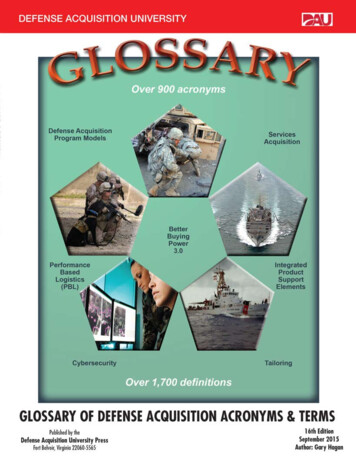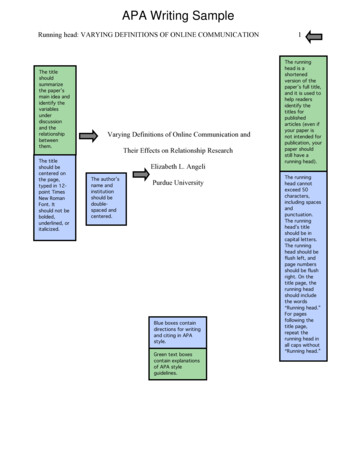
Transcription
APA Writing SampleRunning head: VARYING DEFINITIONS OF ONLINE COMMUNICATIONThe titleshouldsummarizethe paper’smain idea andidentify thevariablesunderdiscussionand therelationshipbetweenthem.The titleshould becentered onthe page,typed in 12point TimesNew RomanFont. Itshould not bebolded,underlined, oritalicized.Varying Definitions of Online Communication andTheir Effects on Relationship ResearchElizabeth L. AngeliThe author’sname andinstitutionshould bedoublespaced andcentered.Purdue UniversityBlue boxes containdirections for writingand citing in APAstyle.Green text boxescontain explanationsof APA styleguidelines.1The runninghead is ashortenedversion of thepaper’s full title,and it is used tohelp readersidentify thetitles forpublishedarticles (even ifyour paper isnot intended forpublication, yourpaper shouldstill have arunning head).The runninghead cannotexceed 50characters,including spacesandpunctuation.The runninghead’s titleshould be incapital letters.The runninghead should beflush left, andpage numbersshould be flushright. On thetitle page, therunning headshould includethe words“Running head.”For pagesfollowing thetitle page,repeat therunning head inall caps without“Running head.”
VARYING DEFINITIONS OF ONLINE COMMUNICATION2AbstractTheabstract isa briefsummary ofthe paper,allowingreaders toquicklyreview themain pointsandpurpose ofthe paper.Theabstractshould bebetween150-250words.Abbreviationsandacronymsused in thepapershould bedefined intheabstract.This paper explores four published articles that report on results from research conductedon online (Internet) and offline (non-Internet) relationships and their relationship tocomputer-mediated communication (CMC). The articles, however, vary in theirdefinitions and uses of CMC. Butler and Kraut (2002) suggest that face-to-face (FtF)interactions are more effective than CMC, defined and used as “email,” in creatingfeelings of closeness or intimacy. Other articles define CMC differently and, therefore,offer different results. This paper examines Cummings et al.’s research in relation tothree other research articles to suggest that all forms of CMC should be studied in orderto fully understand how CMC influences online and offline relationships.Keywords: computer-mediated communication, face-to-face communicationThe word“Abstract”should becenteredand typedin 12 pointTimes NewRoman. Donot indentthe firstline of theabstractparagraph.All otherparagraphsin thepapershould beindented.
VARYING DEFINITIONS OF ONLINE COMMUNICATION3Online Communication Definitions Effect on Relationship ResearchNumerous studies have been conducted on various facets of Internet relationships,The introduction presentsthe problemthat thepaperaddresses.See the OWLresources resource/724/01/The title ofthe paper iscenteredand notbolded.focusing on the levels of intimacy, closeness, different communication modalities, andthe frequency of use of CMC. However, contradictory results are suggested within thisresearch mostly because only certain aspects of CMC are investigated, for example, emailonly. Cummings, Butler, and Kraut (2002) suggest that FtF interactions are moreeffective than CMC (read: email) in creating feelings of closeness or intimacy, whileother studies suggest the opposite. In order to understand how both online (Internet) andoffline (non-Internet) relationships are affected by CMC, all forms of CMC should bestudied. This paper examines Cummings et al.’s research against other CMC research topropose that additional research be conducted to better understand how onlinecommunication effects relationships.In-textcitationsinclude theauthor’s/authors’name/s andthepublicationyear.Thepublicationyear andthe notpagenumber isused,becauseAPA usersareconcernedwith thedate of thearticle (themorecurrent thebetter).In Cummings et al.’s (2002) summary article reviewing three empirical studies ononline social relationships, it was found that CMC, especially email, was less effectivethan FtF contact in creating and maintaining close social relationships. Two of the threereviewed studies focusing on communication in non-Internet and Internet relationshipsmediated by FtF, phone, or email modalities found that the frequency of each modality’suse was significantly linked to the strength of the particular relationship (Cummings etal., 2002). The strength of the relationship was predicted best by FtF and phonecommunication, as participants rated email as an inferior means of maintaining personalrelationships as compared to FtF and phone contacts (Cummings et al., 2002).If an articlehas threeto fiveauthors,write out allof theauthors’names thefirst timetheyappear.Then usethe firstauthor’slast namefollowed by“et al.”
VARYING DEFINITIONS OF ONLINE COMMUNICATION4Cummings et al. (2002) reviewed an additional study conducted in 1999 by theHomeNet project. In this project, Kraut, Mukhopadhyay, Szczypula, Kiesler, and Scherlis(1999) compared the value of using CMC and non-CMC to maintain relationships withpartners. They found that participants corresponded less frequently with their Internetpartner (5.2 times per month) than with their non-Internet partner (7.2 times per month)(as cited in Cummings et al., 2002). This difference does not seem significant, as it isonly two times less per month. However, in additional self-report surveys, participantsresponded feeling more distant, or less intimate, towards their Internet partner than theirnon-Internet partner. This finding may be attributed to participants’ beliefs that email isan inferior mode of personal relationship communication.Intimacy is necessary in the creation and maintenance of relationships, as it isdefined as the sharing of a person’s innermost being with another person, i.e., selfdisclosure (Hu, Wood, Smith, & Westbrook, 2004). Relationships are facilitated by thereciprocal self-disclosing between partners, regardless of non-CMC or CMC. Cummingset al.’s (2002) reviewed results contradict other studies that research the connectionbetween intimacy and relationships through CMC.Hu et al. (2004) studied the relationship between the frequency of InstantMessenger (IM) use and the degree of perceived intimacy among friends. The use of IMinstead of email as a CMC modality was studied because IM supports a non-professionalenvironment favoring intimate exchanges (Hu et al., 2004). Their results suggest that apositive relationship exists between the frequency of IM use and intimacy, demonstratingUse twospacesafter aperiodthroughoutyour paper.
VARYING DEFINITIONS OF ONLINE COMMUNICATION5that participants feel closer to their Internet partner as time progresses through this CMCmodality.Similarly, Underwood and Findlay (2004) studied the effect of Internetrelationships on primary, specifically non-Internet relationships and the perceivedintimacy of both. In this study, self-disclosure, or intimacy, was measured in terms ofshared secrets through the discussion of personal problems. Participants reported asignificantly higher level of self-disclosure in their Internet relationship as compared totheir primary relationship. In contrast, the participants’ primary relationships werereported as highly self-disclosed in the past, but the current level of disclosure wasperceived to be lower (Underwood & Findlay, 2004). This result suggests participantsturned to the Internet in order to fulfill the need for intimacy in their lives.In further support of this finding, Tidwell and Walther (2002) hypothesized CMCparticipants employ deeper self-disclosures than FtF participants in order to overcome thelimitations of CMC, e.g., the reliance on nonverbal cues. It was found that CMC partnersengaged in more frequent intimate questions and disclosures than FtF partners in order toovercome the barriers of CMC. In their study, Tidwell and Walther (2002) measured theperception of a relationship’s intimacy by the partner of each participant in both the CMCand FtF conditions. The researchers found that the participants’ partners stated theirCMC partner was more effective in employing more intimate exchanges than their FtFpartner, and both participants and their partners rated their CMC relationship as moreintimate than their FtF relationship.
VARYING DEFINITIONS OF ONLINE COMMUNICATIONA Level 1headingshould becenteredand bolded.If you usemore thantwo levelsofheadings,consultsection3.02 of theAPA manual(6th ed.) orthe OWLresource source/560/16/6DiscussionIn 2002, Cummings et al. stated that the evidence from their research conflictedwith other data examining the effectiveness of online social relationships. This statementis supported by the aforementioned discussion of other research. There may be a fewpossible theoretical explanations for these discrepancies. First, one reviewed study byCummings et al. (2002) examined only email correspondence for their CMC modality.Therefore, the study is limited to only one mode of communication among otheralternatives, e.g., IM as studied by Hu et al. (2004). Because of its many personalizedfeatures, IM provides more personal CMC. For example, it is in real time without delay,voice-chat and video features are available for many IM programs, and text boxes can bepersonalized with the user’s picture, favorite colors and text, and a wide variety ofBecause allresearchhas itslimitations,it isimportantto discussthelimitationsof articlesunderexamination.emoticons, e.g., :). These options allow for both an increase in self-expression and theability to overcompensate for the barriers of CMC through customizable features, asstated in Tidwell and Walther (2002). Self-disclosure and intimacy may result from IM’sindividualized features, which are not as personalized in email correspondence.In addition to the limitations of email, Cummings et al. (2002) reviewed studiesthat focused on international bank employees and college students. It is possible theparticipants’ CMC through email was used primarily for business, professional, andschool matters and not for relationship creation or maintenance. In this case, personalself-disclosure and intimacy levels are expected to be lower for non-relationshipinteractions, as this communication is primarily between boss and employee or student
VARYING DEFINITIONS OF ONLINE COMMUNICATION7and professor. Intimacy is not required, or even desired, for these professionalrelationships.Instead of professional correspondence, however, Cummings et al.’s (2002)review of the HomeNet project focused on already established relationships and CMC’seffect on relationship maintenance. The HomeNet researchers’ sole dependence on emailcommunication as CMC may have contributed to the lower levels of intimacy andcloseness among Internet relationships as compared to non-Internet relationships (as citedin Cummings et al., 2002). The barriers of non-personal communication in email couldbe a factor in this project, and this could lead to less intimacy among these Internetpartners. If alternate modalities of CMC were studied in both already established andprofessional relationships, perhaps these results would have resembled those of thepreviously mentioned research.In order to gain a complete understanding of CMC’s true effect on both onlineand offline relationships, it is necessary to conduct a study that examines all aspects ofCMC. This includes, but is not limited to, email, IM, voice-chat, video-chat, onlinejournals and diaries, online social groups with message boards, and chat rooms. Theeffects on relationships of each modality may be different, and this is demonstrated bythe discrepancies in intimacy between email and IM correspondence. As each mode ofcommunication becomes more prevalent in individual’s lives, it is important to examinethe impact of all modes of CMC on online and offline relationship formation,maintenance, and even termination.Theconclusionrestatestheproblemthe paperaddressesand canoffer areasfor furtherresearch.See theOWLresource source/724/04/
VARYING DEFINITIONS OF ONLINE COMMUNICATION8ReferencesCummings, J. N., Butler, B., & Kraut, R. (2002). The quality of online socialrelationships. Communications of the ACM, 45(7), 103-108.Hu, Y., Wood, J. F., Smith, V., & Westbrook, N. (2004). Friendships through IM:Examining the relationship between instant messaging and intimacy. Journal ofComputer-Mediated Communication, 10(1), 38-48.Tidwell, L. C., & Walther, J. B. (2002). Computer-mediated communication effects ondisclosure, impressions, and interpersonal evaluations: Getting to know oneanother a bit at a time. Human Communication Research, 28(3), 317-348.Underwood, H., & Findlay, B. (2004). Internet relationships and their impact on primaryrelationships. Behaviour Change, 21(2), 127-140.Start the reference list on a new page, center the title “References,” andalphabetize the entries. Do not underline or italicize the title. Double-space allentries. Every article mentioned in the paper should have an entry.
Purdue OWL EngagementPage 1 of 56APA Writing SampleWelcome to the Purdue OWLThis page is brought to you by the OWL at Purdue(http://owl.english.purdue.edu/). When printing this page, you mustinclude the entire legal notice at bottom.Contributors:Elizabeth Angeli, Jodi Wagner, Elena Lawrick, Kristen Moore, MichaelAnderson, Lars Soderlund, Allen Brizee.Summary:APA (American Psychological Association) is most commonly used to cite sourceswithin the social sciences. This resource, revised according to the 6th edition of theAPA manual, offers examples for the general format of APA research papers, in-textcitations, endnotes/footnotes, and the reference page. For more information, pleaseconsult the Publication Manual of the American Psychological Association, 6thedition, second printing.General FormatPlease use the example at the bottom of this page to cite the Purdue OWL in APA.General APA GuidelinesYour essay should be typed, double-spaced on standard-sized paper (8.5" x 11") with1" margins on all sides. You should use 10-12 pt. Times New Roman font or a similarfont.Include a page header at the top of every page. To create a page header, insert pagenumbers flush right. Then type "TITLE OF YOUR PAPER" in the header flush left.Major Paper SectionsYour essay should include four major sections: the Title Page, Abstract, Main Body,and References.Title PageThe title page should contain the title of the paper, the author's name, and theinstitutional affiliation. Include the page header (described above) flush left with thepage number flush right at the top of the page. Please note that on the title page, yourpage header should look like this:Running head: TITLE OF YOUR 0/8/19/2010
Purdue OWL EngagementPage 2 of 56Pages after the title page should have a running head that looks like this:TITLE OF YOUR PAPERAfter consulting with publication specialists at the APA, OWL staff learned that theAPA 6th edition sample papers have incorrect examples of Running heads on pagesafter the title page. This link will take to you the APA site where you can find acomplete list of all the errors in the APA's 6th edition style guide.Type your title in upper and lowercase letters centered in the upper half of the page.APA recommends that your title be no more than 12 words in length and that it shouldnot contain abbreviations or words that serve no purpose. Your title may take up oneor two lines. All text on the title page, and throughout your paper, should be doublespaced.Beneath the title, type the author's name: first name, middle initial(s), and last name.Do not use titles (Dr.) or degrees (Ph.D.).Beneath the author's name, type the institutional affiliation, which should indicatethe location where the author(s) conducted the t/560/8/19/2010
Purdue OWL EngagementPage 3 of 56Image Caption: APA Title PageAbstractBegin a new page. Your abstract page should already include the page header(described above). On the first line of the abstract page, center the word“Abstract” (no bold, formatting, italics, underlining, or quotation marks).Beginning with the next line, write a concise summary of the key points of yourresearch. (Do not indent.) Your abstract should contain at least your research topic,research questions, participants, methods, results, data analysis, and conclusions. Youmay also include possible implications of your research and future work you seeconnected with your findings. Your abstract should be a single paragraph doublespaced. Your abstract should be between 150 and 250 words.You may also want to list keywords from your paper in your abstract. To do this,center the text and type Keywords: (italicized) and then list your keywords. Listingyour keywords will help researchers find your work in nt/560/8/19/2010
Purdue OWL EngagementPage 4 of 56Image Caption: APA Abstract PagePlease see our Sample APA Paper resource to see an example of an APA paper. Youmay also visit our Additional Resources page for more examples of APA papers.How to Cite the Purdue OWL in APAIndividual ResourcesContributors' names and the last edited date can be found in the orange boxes at thetop of every page on the OWL.Contributors' names (Last edited date). Title of resource. Retrieved from http://Webaddress for OWL /560/8/19/2010
Purdue OWL EngagementPage 5 of 56Angeli, E., Wagner, J., Lawrick, E., Moore, K., Anderson, M., Soderland, L., &Brizee, A. (2010, May 5). General format. Retrieved /01/Contributors:Elizabeth Angeli, Jodi Wagner, Elena Lawrick, Kristen Moore, MichaelAnderson, Lars Soderlund, Allen Brizee.Summary:APA (American Psychological Association) is most commonly used to cite sourceswithin the social sciences. This resource, revised according to the 6th edition of theAPA manual, offers examples for the general format of APA research papers, in-textcitations, endnotes/footnotes, and the reference page. For more information, pleaseconsult the Publication Manual of the American Psychological Association, 6thedition, second printing.In-Text Citations: The BasicsReference citations in text are covered on pages 169-179 of the Publication Manual.What follows are some general guidelines for referring to the works of others in youressay.Note: APA style requires authors to use the past tense or present perfect tense whenusing signal phrases to describe earlier research. E.g., Jones (1998) found or Jones(1998) has found.APA Citation BasicsWhen using APA format, follow the author-date method of in-text citation. Thismeans that the author's last name and the year of publication for the source shouldappear in the text, E.g., (Jones, 1998), and a complete reference should appear in thereference list at the end of the paper.If you are referring to an idea from another work but NOT directly quoting thematerial, or making reference to an entire book, article or other work, you only have tomake reference to the author and year of publication in your in-text reference.In-Text Citation Capitalization, Quotes, and Italics/Underlining Always capitalize proper nouns, including author names and initials: D. Jones. If you refer to the title of a source within your paper, capitalize all words thatare four letters long or greater within the title of a source: Permanence andChange. Exceptions apply to short words that are verbs, nouns, pronouns,adjectives, and adverbs: Writing New Media, There Is Nothing Left to 0/8/19/2010
Purdue OWL EngagementPage 6 of 56(Note: in your References list, only the first word of a title will be capitalized:Writing new media.) When capitalizing titles, capitalize both words in a hyphenated compound word:Natural-Born Cyborgs. Capitalize the first word after a dash or colon: "Defining Film Rhetoric: TheCase of Hitchcock's Vertigo." Italicize or underline the titles of longer works such as books, edited collections,movies, television series, documentaries, or albums: The Closing of theAmerican Mind; The Wizard of Oz; Friends. Put quotation marks around the titles of shorter works such as journal articles,articles from edited collections, television series episodes, and song titles:"Multimedia Narration: Constructing Possible Worlds"; "The One WhereChandler Can't Cry."Short QuotationsIf you are directly quoting from a work, you will need to include the author, year ofpublication, and the page number for the reference (preceded by "p."). Introduce thequotation with a signal phrase that includes the author's last name followed by the dateof publication in parentheses.According to Jones (1998), "Students often had difficulty using APA style, especiallywhen it was their first time" (p. 199).Jones (1998) found "students often had difficulty using APA style" (p. 199); whatimplications does this have for teachers?If the author is not named in a signal phrase, place the author's last name, the year ofpublication, and the page number in parentheses after the quotation.She stated, "Students often had difficulty using APA style" (Jones, 1998, p. 199), butshe did not offer an explanation as to why.Long QuotationsPlace direct quotations longer than 40 words in a free-standing block of typewrittenlines, and omit quotation marks. Start the quotation on a new line, indented five spacesfrom the left margin. Type the entire quotation on the new margin, and indent the firstline of any subsequent paragraph within the quotation five spaces from the newmargin. Maintain double-spacing throughout. The parenthetical citation should comeafter the closing punctuation mark.Jones's (1998) study found the following:Students often had difficulty using APA style, especially when it was their first timeciting sources. This difficulty could be attributed to the fact that many students failedto purchase a style manual or to ask their teacher for help. (p. /8/19/2010
Purdue OWL EngagementPage 7 of 56Summary or ParaphraseIf you are paraphrasing an idea from another work, you only have to make reference tothe author and year of publication in your in-text reference, but APA guidelinesencourage you to also provide the page number (although it is not required.)According to Jones (1998), APA style is a difficult citation format for first-timelearners.APA style is a difficult citation format for first-time learners (Jones, 1998, p. 199).Contributors:Elizabeth Angeli, Jodi Wagner, Elena Lawrick, Kristen Moore, MichaelAnderson, Lars Soderlund, Allen Brizee.Summary:APA (American Psychological Association) is most commonly used to cite sourceswithin the social sciences. This resource, revised according to the 6th edition of theAPA manual, offers examples for the general format of APA research papers, in-textcitations, endnotes/footnotes, and the reference page. For more information, pleaseconsult the Publication Manual of the American Psychological Association, 6thedition, second printing.In-Text Citations: Author/AuthorsAPA style has a series of important rules on using author names as part of the authordate system. There are additional rules for citing indirect sources, electronic sources,and sources without page numbers.Citing an Author or AuthorsA Work by Two Authors: Name both authors in the signal phrase or in theparentheses each time you cite the work. Use the word "and" between the authors'names within the text and use the ampersand in the parentheses.Research by Wegener and Petty (1994) supports.(Wegener & Petty, 1994)A Work by Three to Five Authors: List all the authors in the signal phrase or inparentheses the first time you cite the source.(Kernis, Cornell, Sun, Berry, & Harlow, 1993)In subsequent citations, only use the first author's last name followed by "et al." in thesignal phrase or in parentheses.(Kernis et al., 1993)In et al., et should not be followed by a period.Six or More Authors: Use the first author's name followed by et al. in the signalphrase or in rint/560/8/19/2010
Purdue OWL EngagementPage 8 of 56Harris et al. (2001) argued.(Harris et al., 2001)Unknown Author: If the work does not have an author, cite the source by its title inthe signal phrase or use the first word or two in the parentheses. Titles of books andreports are italicized or underlined; titles of articles and chapters are in quotationmarks.A similar study was done of students learning to format research papers ("UsingAPA," 2001).Note: In the rare case the "Anonymous" is used for the author, treat it as the author'sname (Anonymous, 2001). In the reference list, use the name Anonymous as theauthor.Organization as an Author: If the author is an organization or a government agency,mention the organization in the signal phrase or in the parenthetical citation the firsttime you cite the source.According to the American Psychological Association (2000),.If the organization has a well-known abbreviation, include the abbreviation in bracketsthe first time the source is cited and then use only the abbreviation in later citations.First citation: (Mothers Against Drunk Driving [MADD], 2000)Second citation: (MADD, 2000)Two or More Works in the Same Parentheses: When your parenthetical citationincludes two or more works, order them the same way they appear in the reference list,separated by a semi-colon.(Berndt, 2002; Harlow, 1983)Authors With the Same Last Name: To prevent confusion, use first initials with thelast names.(E. Johnson, 2001; L. Johnson, 1998)Two or More Works by the Same Author in the Same Year: If you have twosources by the same author in the same year, use lower-case letters (a, b, c) with theyear to order the entries in the reference list. Use the lower-case letters with the year inthe in-text citation.Research by Berndt (1981a) illustrated that.Introductions, Prefaces, Forewords, and Afterwards: When citing an Introduction,Preface, Foreword, or Afterward in-text, cite the appropriate author and year as usual.(Funk & Kolln, 1992)Personal Communication: For interviews, letters, e-mails, and other person-toperson communication, cite the communicators name, the fact that it was /560/8/19/2010
Purdue OWL EngagementPage 9 of 56communication, and the date of the communication. Do not include personalcommunication in the reference list.(E. Robbins, personal communication, January 4, 2001).A. P. Smith also claimed that many of her students had difficulties with APA style(personal communication, November 3, 2002).Citing Indirect SourcesIf you use a source that was cited in another source, name the original source in yoursignal phrase. List the secondary source in your reference list and include thesecondary source in the parentheses.Johnson argued that.(as cited in Smith, 2003, p. 102).Note:When citing material in parentheses, set off the citation with a comma, as above.Electronic SourcesIf possible, cite an electronic document the same as any other document by using theauthor-date style.Kenneth (2000) explained.Unknown Author and Unknown Date: If no author or date is given, use the title inyour signal phrase or the first word or two of the title in the parentheses and use theabbreviation "n.d." (for "no date").Another study of students and research decisions discovered that students succeededwith tutoring ("Tutoring and APA," n.d.).Sources Without Page NumbersWhen an electronic source lacks page numbers, you should try to include informationthat will help readers find the passage being cited. When an electronic document hasnumbered paragraphs, use the ¶ symbol, or the abbreviation "para." followed by theparagraph number (Hall, 2001, ¶ 5) or (Hall, 2001, para. 5). If the paragraphs are notnumbered and the document includes headings, provide the appropriate heading andspecify the paragraph under that heading. Note that in some electronic sources, likeWeb pages, people can use the Find function in their browser to locate any passagesyou cite.According to Smith (1997), . (Mind over Matter section, para. 6).Note: Never use the page numbers of Web pages you print out; different computersprint Web pages with different pagination.Contributors:Elizabeth Angeli, Jodi Wagner, Elena Lawrick, Kristen Moore, MichaelAnderson, Lars Soderlund, Allen wlprint/560/8/19/2010
Purdue OWL EngagementPage 10 of 56APA (American Psychological Association) is most commonly used to cite sourceswithin the social sciences. This resource, revised according to the 6th edition of theAPA manual, offers examples for the general format of APA research papers, in-textcitations, endnotes/footnotes, and the reference page. For more information, pleaseconsult the Publication Manual of the American Psychological Association, 6thedition, second printing.Footnotes and EndnotesAPA does not recommend the use of footnotes and endnotes because they are oftenexpensive for publishers to reproduce. However, if explanatory notes still provenecessary to your document, APA details the use of two types of footnotes: contentand copyright.When using either type of footnote, insert a number formatted in superscript followingalmost any punctuation mark. Footnote numbers should not follow dashes ( — ), andif they appear in a sentence in parentheses, the footnote number should be insertedwithin the parentheses.Scientists examined—over several years1—the fossilized remains of the wooly-woolyyak.2 (These have now been transferred to the Chauan Museum.3)When using the footnote function in a word-processing program like Microsoft Word,place all footnotes a
In Cummings et al.'s (2002) summary article reviewing three empirical studies on online social relationships, it was found that CMC, especially email, was less effective than FtF contact in creating and maintaining close social relationships. Two of the three reviewed studies focusing on communication in non-Internet and Internet relationships
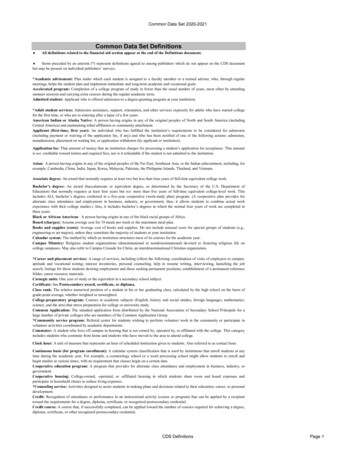
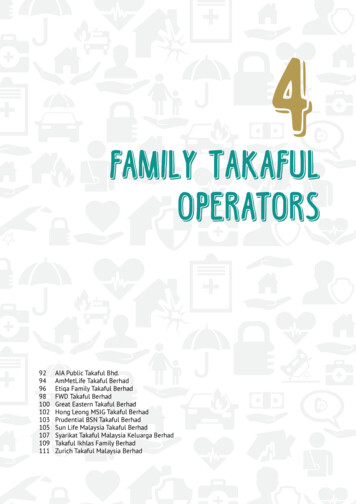
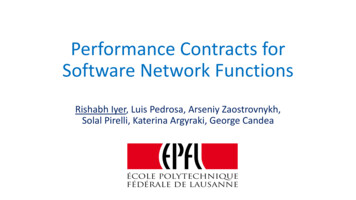
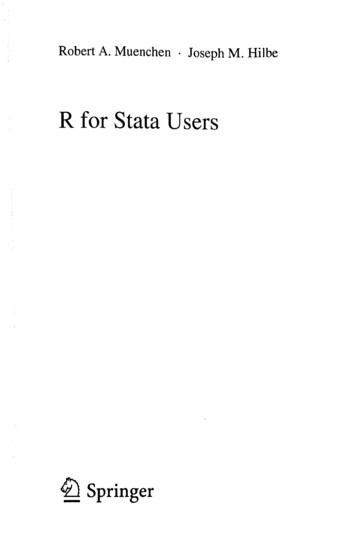

![Drawing the Human Head Burne Hogarth[English] - Internet Archive](/img/29/drawing-the-human-head-burne-hogarth-english.jpg)
